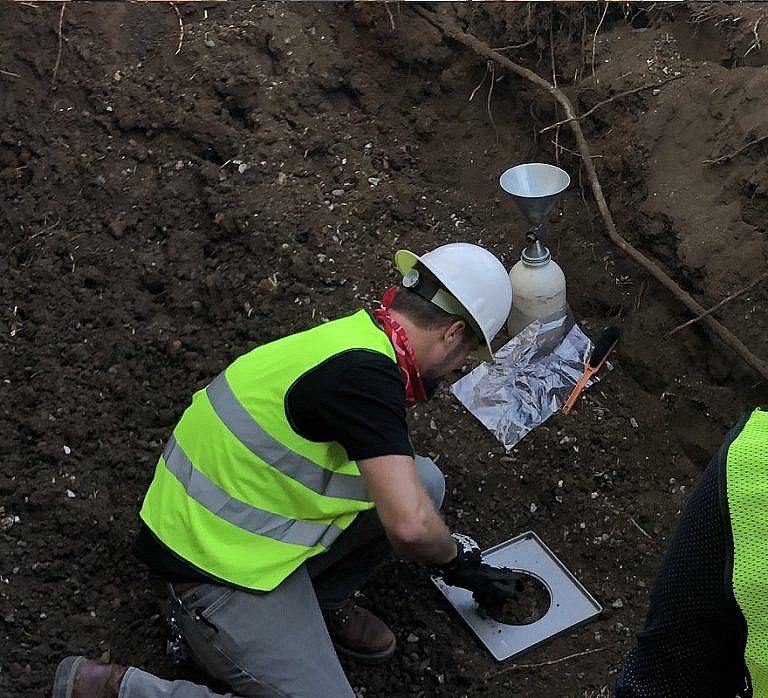Diagenesis
Diagenesis: In geology, diagenesis refers to the physical and chemical changes of a sedimentary formation when compaction and lithification occur over time.
Diagenesis: In geology, diagenesis refers to the physical and chemical changes of a sedimentary formation when compaction and lithification occur over time.

Soil Compaction Testing or Soil Density Testing Soil compaction testing, or soil density testing, is the process by which the density property of a soil mass is increased in the field by various means, and monitored by a professional geologist in accordance with local building department specifications. During the placement of engineered backfill material, density…

Liquefaction Liquefaction: Liquefaction is the process by which there is: (1) a sudden and significant decrease of shear resistance in a soil sample (cohesion-less); (2) a sudden (but temporary) increase of the pore-water pressure of a substance; and (3) a solid mass of soil that is transformed into a fluid state mass. In the event…

Focus (Hypocenter) Focus (Hypocenter): In the seismology branch of geology, a focus, or hypocenter, refers to the specific place where an earthquake rupture originates. The focus, or hypocenter, underlies the epicenter when an earthquake occurs at a dip-slip fault, strike-slip fault, oblique-slip fault, or listric fault. In the event of an earthquake, geologists, and seismologists…

Seismic Moment Seismic Moment: In the seismology branch of geology, seismic moment represents a measure of the size of an earthquake, depending on the area of rupture, the rigidity of the rock, and the amount of slip from faulting.

Recurrence Interval Meaning In the field of geology, the term “Recurrence Interval” refers to the average time interval that occurs between two recorded events of seismic activity, of equal magnitude, along the same fault.

Mafic Definition In geology, “mafic” is a term that describes an igneous rock that has an abundance of darker color minerals.